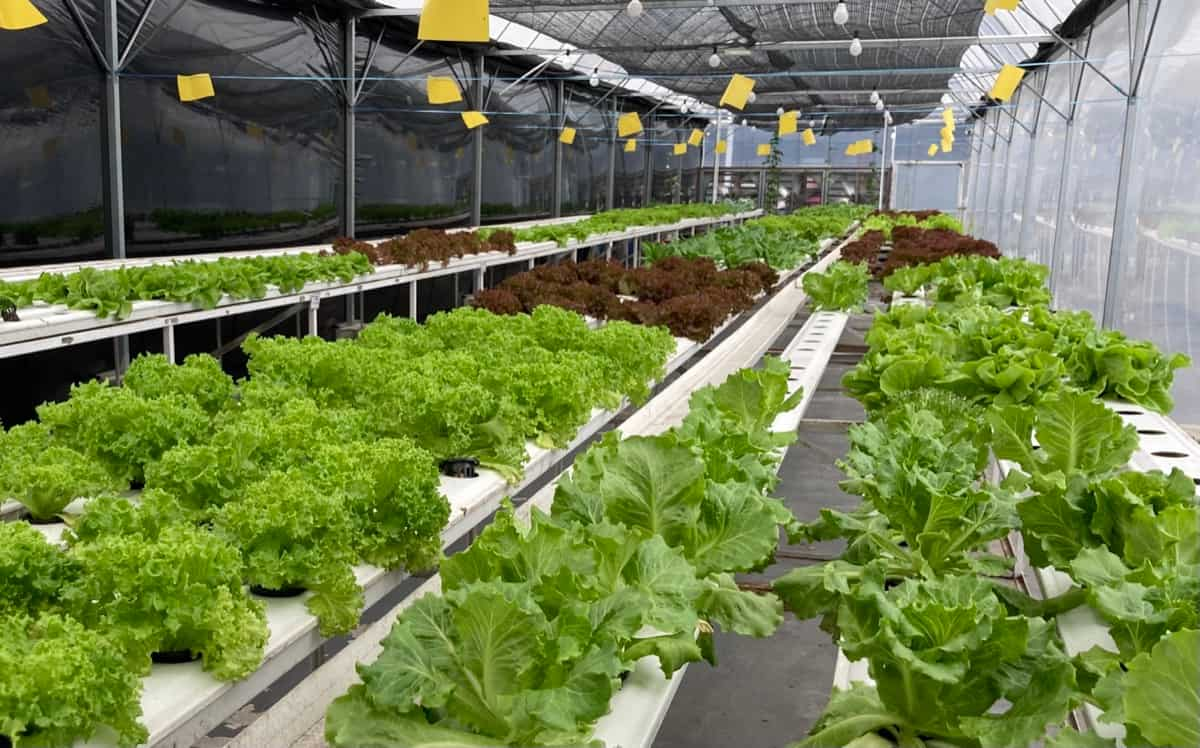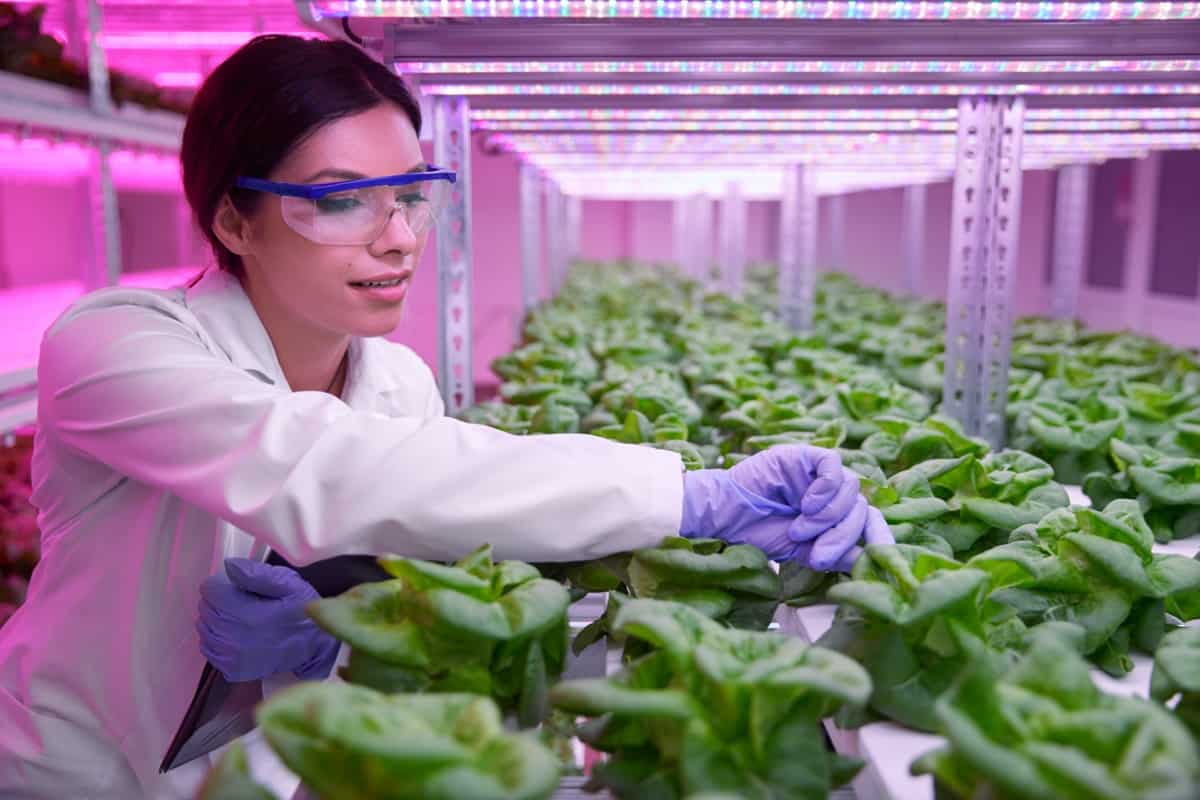Welcome to our blog on a hydroponic garden’s fascinating plant pollination process! As nature’s pollinators are absent, hydroponic growers must take charge of this crucial process. Discover the unique methods used to transfer pollen, the importance of pollination for fruitful yields, and how to optimize this process for a thriving hydroponic garden.

Plant Pollination Process in the Hydroponic Garden
What is Hydroponic Plant Pollination?
Hydroponic plant pollination is crucial to crop production success in hydroponic gardens. Unlike natural pollination, which relies on pollinators, hydroponic plants require manual, mechanical, or biological intervention to transfer pollen between flowers. This article discusses the science behind hydroponic plant pollination, different pollination techniques, factors affecting pollination, and its importance for crop yields and quality in hydroponic gardening.
Hydroponic plant pollination involves the deliberate transfer of pollen from the male flower to the female reproductive organs of flowers. Since hydroponic gardens lack natural pollinators, growers must take charge of this process to ensure successful fertilization and seed production.
Three main techniques are used for hydroponic plant pollination: manual, mechanical, and biological. Manual pollination utilizes brushes or cotton swabs to transfer pollen individually. Mechanical pollination involves shaking the plants to release pollen, while biological pollination introduces pollinators like bees into the environment.
Importance of Plant Pollination in Hydroponic Gardening
Proper plant pollination in hydroponic gardens significantly enhances yields, quality produce, seed production, uniform plant growth, enhanced plant health, cost-effectiveness, sustainable practice, biodiversity support, crop diversity, and environmental conservation.
By promoting pollination, plants can produce more fruits and vegetables, resulting in higher crop yields, better-tasting produce, and continuity of the crop’s growth cycle. This also leads to a more diverse range of crops available for consumption, promoting biodiversity and ecosystem health. Additionally, efficient pollination techniques can save costs associated with manual intervention or pollinator management.
Methods of Plant Pollination in Hydroponic Systems
Plant pollination in hydroponic systems can be done using manual, mechanical, biological, or biological methods. Manual pollination involves transferring pollen with a brush or cotton swab, which is simple and low-cost for small-scale gardens. Mechanical pollination involves shaking plants to release pollen but may damage plants and reduce yields. Biological pollination involves introducing pollinators like bees, which replicate natural pollination but require careful management to avoid damage and diseases.
In case you missed it: 10 Common Problems With Hydroponic Farming: How to Fix, Treatment, and Solutions

Role of Insects in Pollinating Hydroponic Plants
- Insects are vital in pollinating hydroponic plants, ensuring successful fertilization and fruit production.
- Approximately 80% of flowering plants rely on insect pollinators for reproduction.
- Common insect pollinators in hydroponic gardens include bees, butterflies, and bumblebees.
- Bees are highly efficient pollinators, capable of visiting numerous flowers in a single trip.
- Studies show insect-pollinated hydroponic plants have higher yields and better fruit quality than manually or mechanically pollinated ones.
- Insect pollinators enhance plant genetic diversity, improving resilience against diseases and environmental changes.
- Due to their complex flower structure, certain hydroponic crops, like tomatoes and cucumbers, benefit greatly from insect pollination.
- Growers can attract insects by planting companion plants, providing water sources, and avoiding pesticide use.
- Regular insect population monitoring ensures consistent pollination and maximizes crop productivity.
Factors Affecting Hydroponic Plant Pollination
Temperature, humidity, light, and airflow significantly influence hydroponic plant pollination. Properly managing these factors is essential to optimize flower development and attract pollinators. Hydroponic plant pollination is vital for maximizing crop yields and quality. Successful pollination leads to higher fruit yields, improved uniformity, and enhanced plant vigor. Crops like tomatoes, cucumbers, and strawberries rely on proper pollination for optimal fruit development and seed production.
Artificial Pollination Techniques for Hydroponic Gardens
Artificial pollination techniques in hydroponic gardens involve manual, mechanical, and biological methods. Manual pollination with brushes or swabs is simple and affordable but time-consuming for larger gardens. Mechanical pollination, achieved by shaking plants, is quick and efficient but may cause damage.
Biological pollination involving pollinators is effective for larger gardens but requires careful management to avoid potential issues. Growers can choose the most suitable technique based on the garden’s size, crop type, and available resources, ensuring successful pollination and maximizing crop yields and quality in hydroponic systems.
The Impact of Temperature and Humidity on Plant Pollination in Hydroponics
The optimal temperature for plant pollination in hydroponics is 70-80°F (21-27°C). High temperatures reduce pollen viability, while low temperatures hinder pollinator activity, resulting in limited pollen transfer and reduced fruit production. Humidity should be 50-70% to avoid pollen quality and germination issues. Sufficient light is crucial for flower development and attracts pollinators, while adequate airflow aids pollinators in locating flowers, facilitating effective pollen transfer and improving overall pollination.
In case you missed it: Unveiling the Downsides: 11 Disadvantages of Hydroponics You Must Know

Optimizing Nutrient Levels for Successful Plant Pollination in Hydroponic Setups
Proper nutrient levels are crucial for successful plant pollination in hydroponic setups. Adequate nutrient supply promotes healthy flower development, attracting pollinators. Proper nutrient balance directly impacts pollen viability, ensuring efficient fertilization during pollination. Key nutrients for pollination include nitrogen, phosphorus, potassium, calcium, and magnesium. Nutrient deficiencies can lead to poor flower quality and reduced pollen production, hindering pollination success. Avoiding nutrient toxicity is essential to avoid negative effects on plant development and pollination.
Understanding the Reproductive Structures of Hydroponic Plants for Effective Pollination
Hydroponic plants have male and female reproductive structures, with male stamen producing pollen for fertilization and female pistils containing stigma, style, and ovary. Pollination involves transferring pollen from stamen to stigma, ensuring successful ovary fertilization and fruit development. Manual pollination using a brush or vibrating pollinators ensures efficient pollen transfer in hydroponics.
The Role of Light Intensity and Duration in Promoting Plant Pollination in Hydroponics
Light intensity and duration in promoting plant pollination in hydroponics. Optimal light intensity is essential for flower development and attracting pollinators. Low light intensity can hinder flower development and reduce pollinator activity, leading to poor pollination and lower fruit yields.
The high light intensity can cause stress and affect overall growth and fruit development. Consistent light duration is crucial for regulating plant growth and flowering, synchronized pollination, and improved fruit sets. Balancing light and darkness ensures plants receive sufficient rest and energy for flowering and pollination.
Common Challenges and Solutions for Plant Pollination in Hydroponic Gardens
Challenges for plant pollination in hydroponic gardens include the need for more natural pollinators, inconsistent pollination due to limited pollinator activity, and the introduction of biological pollinators like bees or butterflies. High temperatures can affect pollination, so maintaining an optimal temperature range (70-80°F) is crucial.
Insufficient airflow can hinder pollinator navigation and transfer, so installing fans and ventilation systems can improve airflow. Humidification levels between 50-70% are essential for optimal pollination conditions. Inadequate light affects flower development and pollinator attraction, so sufficient light intensity and duration can promote growth and pollinator activity.
Promoting Biodiversity for Enhanced Plant Pollination in Hydroponic Systems
Pollination is crucial in hydroponics as it ensures flower pollination and prevents genetic contamination. Various pollination methods are available: hand pollination, vibrating pollinator, and fan pollination. Not all hydroponic plants need pollination; leafy greens, herbs, and root vegetables can thrive without it.
However, fruiting plants like tomatoes, cucumbers, and peppers require pollination to produce fruit. Hand pollination or vibrating pollinators are suitable for most fruiting plants. The right pollination system depends on factors like plant type, hydroponic system, farm size, and budget. Small setups may benefit from hand pollination, while larger farms might opt for vibrating or fan pollinators to maximize efficiency.
In case you missed it: Low-cost DIY Hydroponics Setup: Building on a Budget

Conclusions
The plant pollination process in a hydroponic garden requires careful attention and intervention due to the absence of natural pollinators. Manual or biological methods ensure successful pollination and higher yields of fruits and vegetables.
- Feed Your Flock for Less: Top 10 Tips to Save on Chicken Feed
- Ultimate Guide to Ossabaw Island Hog: Breeding, Raising, Diet, and Care
- Hatching Answers: The Top 10 Reasons Your Chickens Aren’t Laying Eggs
- Eggs and Economics: Breaking Down the Cost of Raising Backyard Chickens
- Defend Your Greens: Proven Methods to Keep Iguanas Out of Your Garden
- Ultimate Guide to Cinnamon Queen Chicken: A Comprehensive Guide for Beginners
- Ultimate Guide to California Tan Chicken: Breeding, Raising, Diet, Egg-Production and Care
- Ultimate Guide to Marsh Daisy Chicken: Breeding, Raising, Diet, and Care
- 10 Types of Chicken Farming Businesses You Can Start for Profits